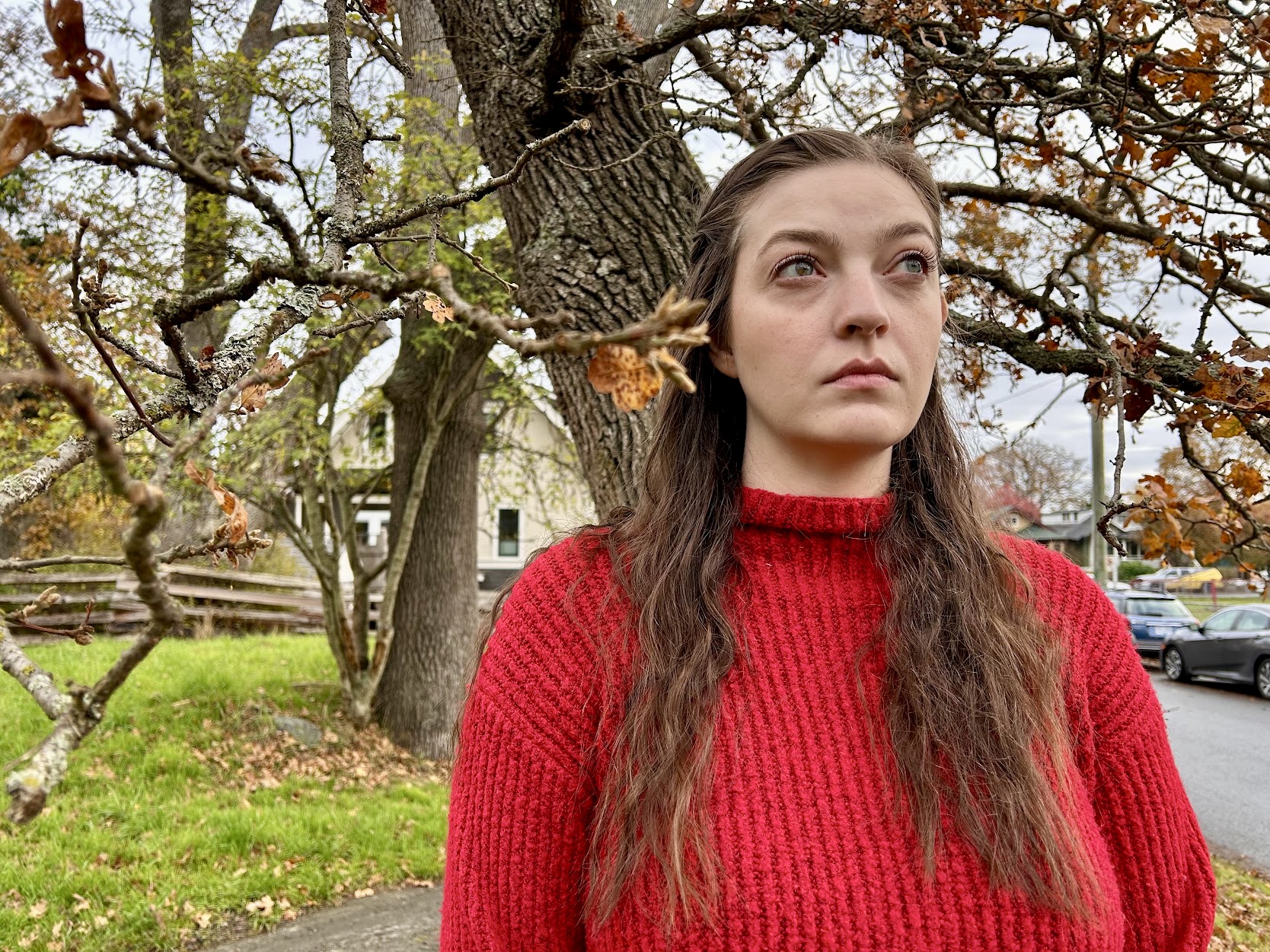A Climate Disaster Project Feature series
The stories in this series were shared as part of the Climate Disaster Project (CDP), an international collaboration of post-secondary and media partners coordinated through UVic’s writing department. Students in CDP classes learn trauma-informed techniques for interviewing and working with survivors of disasters from wildfires to floods to extreme heat. Before they take that work into the community, these students interview each other, sharing their own experiences with climate change and what they think they can be done about it. These are some of their stories.

Haley Reynoldson, photo by Lauren Hutchinson.
Victoria, Canada, Western North America heat wave, 2021
Haley grew up riding horses in Merritt, B.C. After graduating high school in 2012, Haley moved to Victoria, where she started working to save money. Eventually, she enrolled at the University of Victoria, double majoring in gender studies and environmental studies. When the Western North America heat wave brought unbearable temperatures to southern Vancouver Island, she was living with her cat, Lily, in a bachelor apartment on the third floor of a dated building near Victoria’s Royal Jubilee Hospital.
It’s an old building with really, really old windows, and they don’t close properly. So in the winter, there’s a draft. In the summer, there’s hot air coming in through them. It was regularly getting to 36 degrees inside my building. I’m on the corner, so I got the sun for most of the day. Coming from the hallway into my apartment, there was a noticeable change in temperature.
It was like walking into a sauna. I had no air conditioning. I had one standing fan I would turn on and have pointed at me. I remember the landlord sent out a notice to our resident portal about air conditioners and how window unit air conditioners weren’t allowed. You can get the concern they might have about the ones that stick out the windows, but for them to be saying that while we’re sitting in the building, just boiling?
It was a lot of time spent lying on the floor in my apartment. No clothes, because it was too hot to wear clothes. Lily had been spending a lot of time under the bed, which I think was just the coolest place in the house. So it wasn’t particularly worrisome. But, after I came home from work one day, I saw her walk out from under the bed and come over to me. She was panting, which is not a normal behaviour for cats. They don’t act like dogs do. They don’t pant to cool down.
So I called the emergency vet hospital here in Victoria, and they said I should definitely bring her in right away. I don’t drive, but I have a friend who lives in the same building as me. Luckily, he was home. So he was driving. I was in the passenger seat—with Lily in her carrier—crying, and my friend being like, “It’s gonna be okay” to both of us. It was really great to have someone there.
This was during COVID, so we weren’t able to bring her into the hospital. You had to call the desk and they would come and get her from you. After that it was just sitting in the parking lot, just waiting to hear from them again. We were there from around 7:30 p.m. to close to midnight. I was sobbing the whole time. I was just sitting in tears and sniffling. They kept her for another day and a half or so.
I think what I went through with Lily was the first time that something driven by climate change directly affected me. I joke all the time. I say she’s my emotional support animal, and I just couldn’t even imagine what I would have done if I had lost her during that. I know there are tons of people who did lose loved ones, including pets — I’m counting them in as loved ones — and a lot of people who lost their own lives because of the heat.
It made me think about how, maybe experiencing something like the heat dome could help people start thinking about how bad it is and what we could do about it. I know that in Colwood, there is a bill being put forth that apartments need to guarantee a maximum temperature: I believe, 26 degrees. Something like that is absolutely crucial, especially as we’re just going to be experiencing hotter summers. Policies about building materials, insulated windows: anything that can be done in that sense to help keep buildings to a reasonable temperature.
There’s so much that needs to change. I think we need a big shift away from capitalism and consumerist culture, because the only way to run those systems is through continual exploitation of the land. And that’s how we got here in the first place. Giving the management of land back to Indigenous communities is another step that definitely needs to be taken in order to address climate change.
And I do believe that there’s a level of individual action that can and should be taken. Anything that can be done by anyone, it’s not going to hurt, so why not do it? Knowing that there are people that actually care, who are really working towards a better future for people and for the planet, that’s what I try and focus on.








